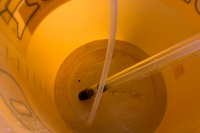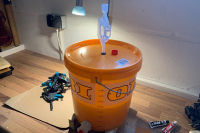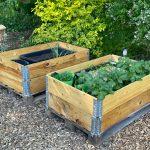(This is part III of the cider making series. Read part I, part II and part IV here.)
It seems the primary fermentation has come to a halt do far, so it’s time to transfer everything into another vessel and let the secondary fermentation take it’s course. The correct english term for this seems to be “racking the cider off it’s lees”.
While the primary fermentation is about yeast cells converting sugar into alcohol and CO², the second fermentation is lactic acid bacteria converting malic acid into lactic acid and CO² and give the brew a smoother, less sour taste. It occurs naturally and spontaneously when the liquid is transferred to a storage container and the yeast is no longer the dominant microbiological species in the soon-to-be cider.



